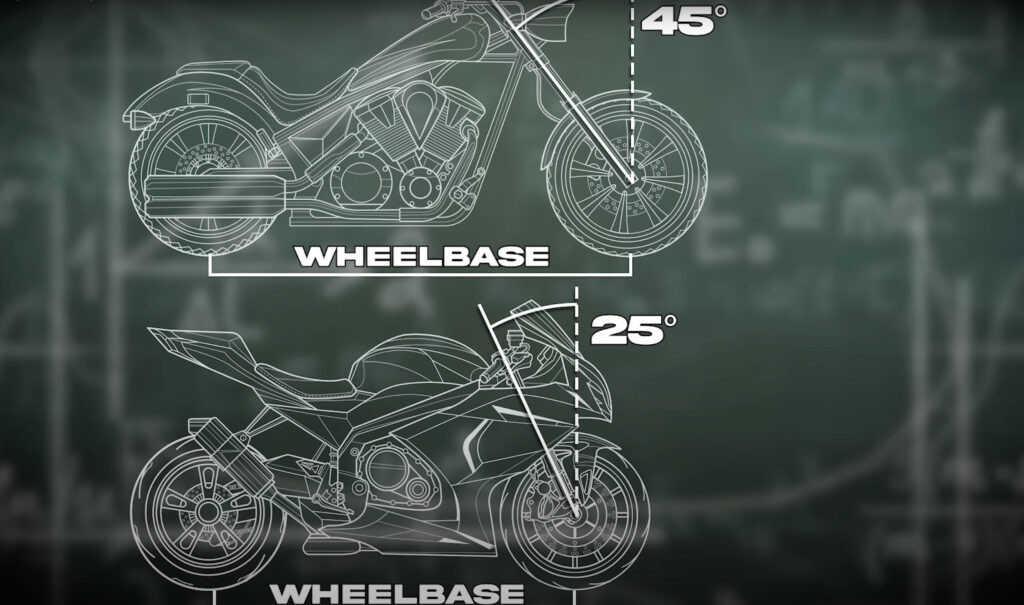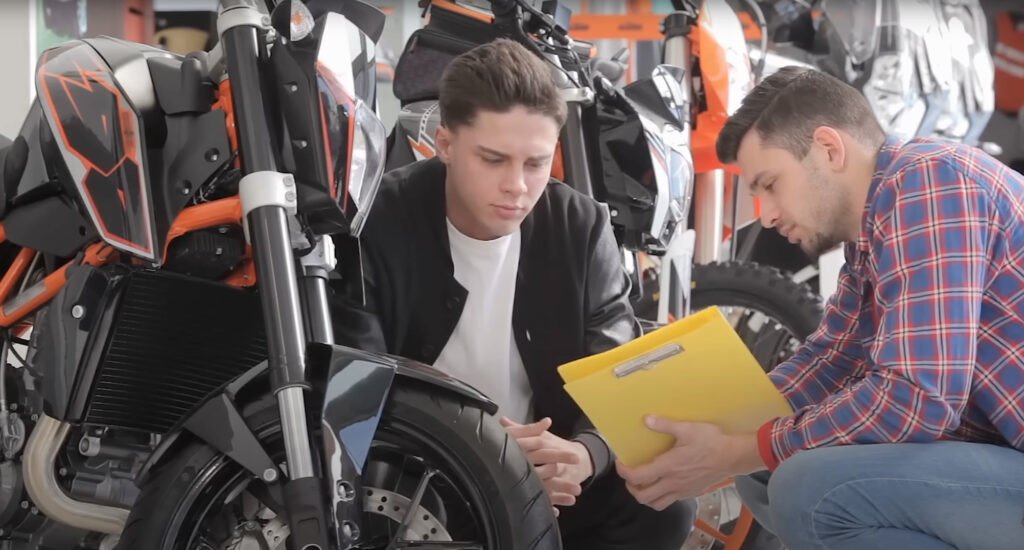Deciding on your first motorcycle can be exciting, but also overwhelming. If you’re searching for the Best Beginner Street Bike, you’re likely bombarded with countless opinions and recommendations. The truth is, the “best” bike is subjective and depends entirely on you and what you want from your riding experience. There isn’t a single model that universally reigns supreme. This guide will help you understand what truly makes a motorcycle suitable for a beginner and empower you to make the right choice for your needs.
To find the perfect fit, there are two crucial questions to consider. The first is straightforward: what style of bike visually appeals to you the most? Your gut feeling matters. If you’ve always dreamed of riding a sleek sportbike like a Kawasaki Ninja, starting with a Ninja 400 is a fantastic idea. Ignoring your personal preference in favor of what you think others might deem “better” is a recipe for buyer’s remorse. For instance, someone who loves the classic look of cruisers might not enjoy a sportbike, and vice versa.
 Cruiser motorcycle parked on a scenic road
Cruiser motorcycle parked on a scenic road
The second question is more complex and requires understanding the fundamental differences between motorcycle types. It goes beyond aesthetics like seating position, fairings, or chrome. To truly grasp what bike is right for you, we need to delve into motorcycle anatomy, specifically motorcycle geometry. This might sound intimidating, but it’s simply a way of describing the relationship between the wheels and the frame, and understanding it will significantly clarify your choice. Let’s simplify these concepts to make them easily digestible for newcomers.
Motorcycle geometry revolves around several key elements. The frame’s headset angle is a crucial point. Within the headset are triple clamps, and their “offset”—the distance the fork tubes are positioned forward from the steering stem—is important. Then we have the swingarm, where length and angle are key. The wheelbase, the distance between the points where the tires contact the ground, is another significant factor. Suspension travel, bike weight, seat height, and wheel size also play crucial roles in a bike’s handling characteristics.
The combination of these geometric traits is what defines the essence of each motorcycle category, differentiating a cruiser from a sportbike, for example. These factors dictate how a bike accelerates, brakes, and turns. A longer wheelbase contributes to stability but reduces turning agility. A lower center of gravity enhances stability but can make leaning and changing direction more challenging. Larger front wheels improve stability and roll over bumps more effectively, but they require more effort to accelerate, decelerate, and change direction. Front wheel sizes vary significantly and drastically impact a bike’s handling.
 Motorcycle geometry diagram illustrating rake, trail, and wheelbase
Motorcycle geometry diagram illustrating rake, trail, and wheelbase
Rake, also known as castor, is the angle of the forks. Comparing a cruiser with a 45-degree rake to a sportbike with a 25-degree rake visually demonstrates this difference. Increased rake extends the wheelbase and increases trail. This leads us to the most crucial geometric measurement: trail. Trail is the horizontal distance between the front tire’s contact point with the ground and an imaginary line extending downwards from the steering head axis. Notice it’s the steering head axis, not just the forks. This distinction highlights the importance of triple clamp offset, as it can significantly alter trail independently of rake. Remember, trail is the most telling number. A larger trail figure results in greater stability, while a smaller trail number contributes to nimbler handling. While rake is often discussed and visually apparent, trail provides a deeper insight into a bike’s handling dynamics.
So, let’s analyze a cruiser. It typically features a long wheelbase, low center of gravity, extended swingarm, raked-out forks, a large front wheel, and a significant trail figure. These characteristics combine to create a riding experience that prioritizes stability. The trade-off? Cruisers are not known for their nimble handling.
 Rider on a cruiser motorcycle on an open road
Rider on a cruiser motorcycle on an open road
Conversely, sportbikes represent the other extreme. They generally have a short wheelbase, higher center of gravity, lightweight construction, steep fork angles, a short trail figure, and smaller wheels. These attributes result in bikes that are incredibly responsive and eager to change direction, but this agility comes at the expense of stability. This contrast highlights why cruisers are often appealing, particularly to novice riders. Their low center of gravity and low seat height make them easy to manage and plant your feet firmly on the ground. Modern cruisers are also becoming lighter, with models like the Honda Rebel 500 weighing less than many sportbikes.
Within each motorcycle category, there’s a wide spectrum of variation. Cruisers range from traditional choppers to powerful performance cruisers. Other popular styles include naked bikes, sport-touring bikes, touring bikes, adventure bikes, enduros, and motards. The sheer variety can be confusing for beginners.
Consider dual-purpose or adventure bikes. These bikes often feature larger 21-inch or 19-inch front wheels. As we’ve learned, larger wheels enhance stability and improve bump absorption. Adventure bikes tend to have longer wheelbases but also a higher center of gravity for increased ground clearance. They typically offer more suspension travel, resulting in a plush ride on uneven surfaces but potentially feeling less precise or “wallowy” on twisty paved roads. However, let’s compare trail figures. A cruiser might have a trail of 135mm, a sportbike around 85mm, and a typical adventure bike around 106mm. This trail figure helps explain the rising popularity of adventure bikes – they offer a balanced compromise between stability and agility.
 Adventure motorcycle on a scenic mountain road
Adventure motorcycle on a scenic mountain road
Understanding motorcycle geometry, especially the crucial role of trail, empowers you to analyze motorcycle specifications and gain insights into a bike’s handling characteristics before even riding it.
This brings us to the second essential question: what kind of riding experience are you seeking? Again, there’s no right or wrong answer, but honesty is key to making the best choice. Envision yourself riding. What do you see? Do you imagine weekend explorations in national parks? Casual Sunday morning rides for breakfast with friends? The thrill of carving through corners at speed? Or simply a practical commute with convenient campus parking? Defining your desired riding experience will significantly narrow down your options and make finding the right best beginner street bike much easier.
 Riders on naked motorcycles enjoying a sunny day ride
Riders on naked motorcycles enjoying a sunny day ride
Ultimately, the best beginner street bike doesn’t exist as a universal concept. Sportbikes aren’t inherently superior to cruisers, or vice versa. The best bike, for a beginner or any rider, is the one that best suits your individual needs and preferences.
If you remain uncertain, consider a naked bike as a starting point. Like adventure bikes, naked bikes are versatile “jack-of-all-trades” machines, and this is a significant advantage for beginners. A naked bike allows you to explore different riding styles and discover what you enjoy most. You wouldn’t want to invest in a dedicated sportbike only to realize you prefer a more relaxed, leisurely riding style, or the other way around. A naked bike can handle commuting, weekend trips, and even track days. They offer a comfortable riding position, good visibility, and neutral geometry, making them exceptionally well-rounded and an excellent choice for discovering your motorcycling passions.

